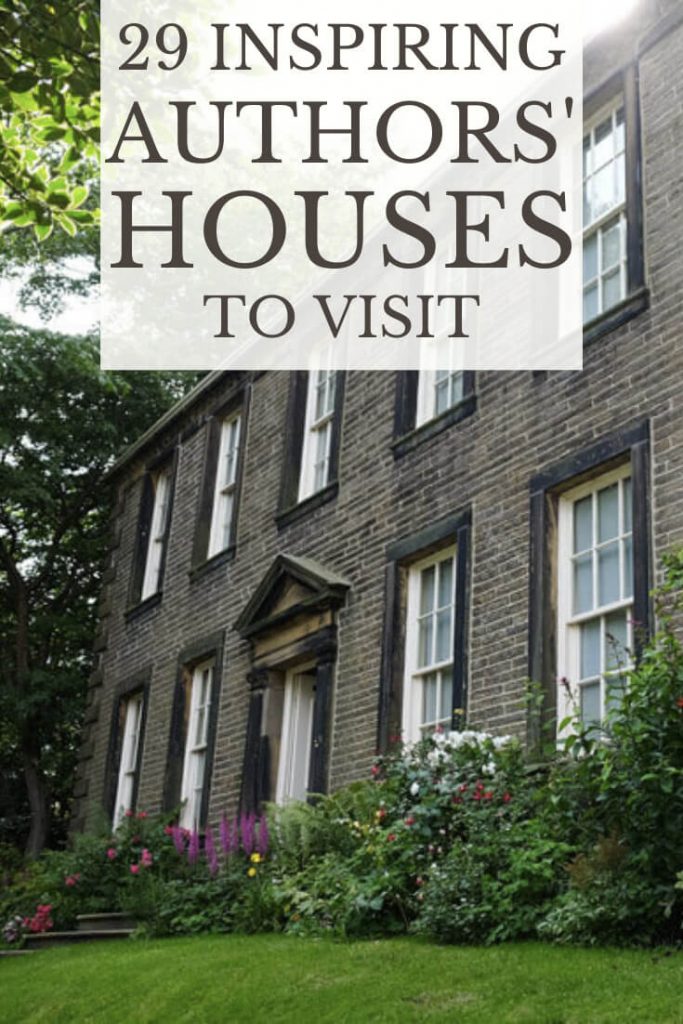There’s something magical about visiting authors’ houses. Walking through the places that inspired your favourite author’s works, seeing how they lived and getting a better feel for what they were like as people, not just what comes across in their novels, plays, poems or essays.
While many authors’ houses have disappeared or been changed beyond recognition, there are lots of writers’ houses that have been turned into museums. In this post I’ve brought together my favourites, and I’ve also asked some fellow travel bloggers to recommend more of the best authors’ houses to visit around the world.
Authors’ houses to visit in the UK
As the birthplace of the modern novel and home of so many famous writers, it’s not surprising that there are lots of authors’ houses that you can visit in the UK. Along with England’s National Trust, who own several writers’ houses, there’s a particularly strong history of literary societies in England, Scotland and Wales, and many of them have been successful in saving the homes of writers they love.
Brontë Parsonage Museum, Haworth, Yorkshire
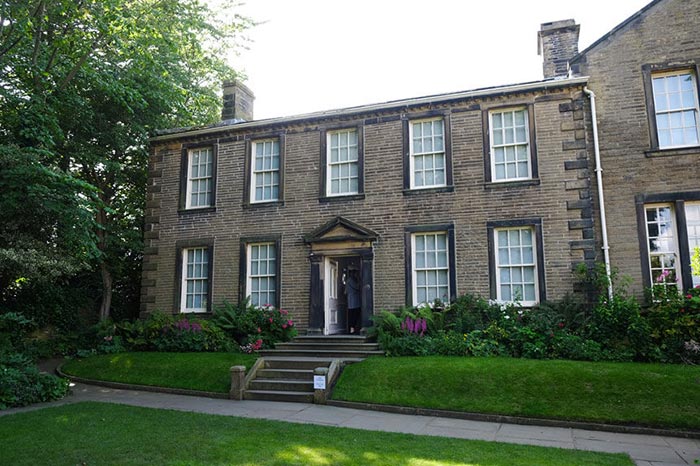
Charlotte, Emily and Anne Brontë lived in the Parsonage at Haworth from 1820 until their deaths, and wrote almost all their most famous works here, including Wuthering Heights, Jane Eyre and The Tenant of Wildfell Hall.
After their father died in 1861 (six years after the death of his last surviving child, Charlotte) the house passed to the next parish priest at Haworth and the Brontë family’s possessions were sold. The Brontë Society was formed in 1893 (it’s one of the oldest literary societies in the world) and began assembling a collection of Brontë belongings and other memorabilia. The house was bought by a local businessman in 1928 and given to the Brontë Society for use as a museum.
Visitors to the Brontë Parsonage Museum today will find a house that’s been lovingly restored, with many rooms returned to the way the sisters would have known them. The dining table that they walked around together, debating aspects of their novels’ plots was returned to the house in 2015.
Elizabeth Gaskell’s house, Manchester
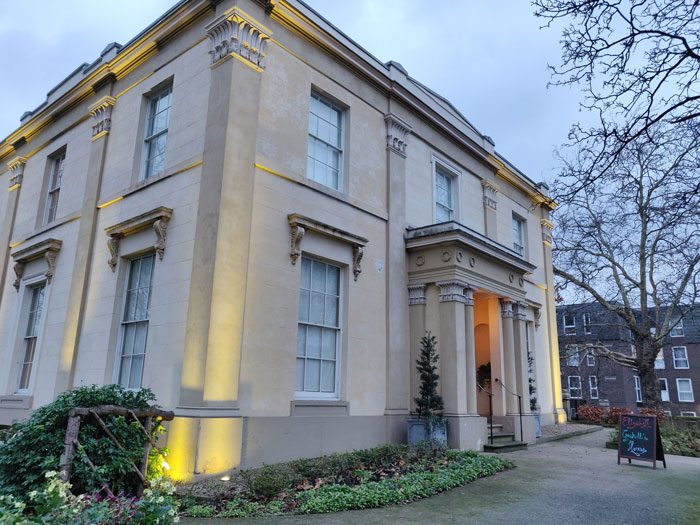
Elizabeth Gaskell lived in this grand Classical villa from 1850 until her death in 1865. The house is only a mile south of Manchester city centre in what’s now a very built-up area but which in Gaskell’s day was a peaceful middle-class retreat away from the smoke and noise of the city.
Elizabeth Gaskell’s house has been open to the public since 2014, and the trust who own it are gradually restoring the rooms to the way they would have looked when Elizabeth and her husband William Gaskell lived here. The Morning Room, Dining Room and William’s study have all been beautifully recreated, and visitors are encouraged to feel at home in the house.
Downstairs in the old servants’ quarters there’s a lovely cafe and events space. The events at Elizabeth Gaskell’s house include photography workshops, tours of the house and excellent, really accessible talks on Gaskell’s works. It’s well worth taking a look at what’s on when planning your visit.
Jane Austen’s house, Chawton
By Katy from Untold Travel
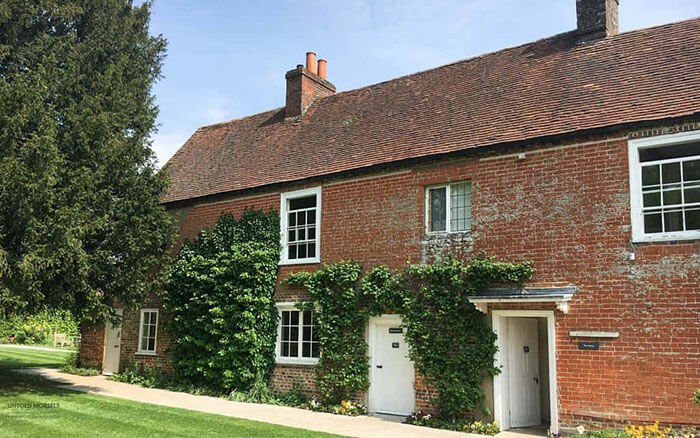
Are you a fan of Jane Austen? Then visit the charming village of Chawton and the house where Jane wrote many of her famous novels and spent the last eight years of her life. Nestled in the rolling green fields of Hampshire to the west of London, Chawton is a pretty village with thatched roof cottages and hedgerows. Jane’s house, a solid red brick Regency era property with vines crawling up the exterior, is in the middle of the village.
Now converted into a museum commemorating Jane Austen’s life, the author’s house has been lovingly restored to reflect the surroundings where some of the world’s best loved novels were written. You can even see the desk where classics Pride and Prejudice and Emma were penned. Take a stroll in the beautiful English style garden and view Jane’s bedroom and the parlour where the family received guests. There’s also a wonderful collection of memorabilia including letters written in the author’s own hand, her jewellery and favourite books.
Jane Austen lived a simple life but there is no doubting where the inspiration for her novels came from. When you visit her home in Chawton it’s easy to see how this setting has continued to charm readers from around the world for over 200 years.
Sir Walter Scott’s Abbotsford House in the Scottish Borders
By Kathi from Watch Me See
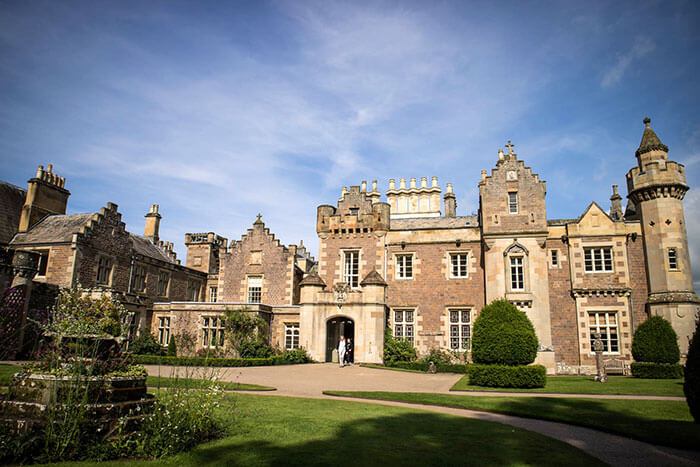
One of the key figures of Scotland’s rich literary history is Sir Walter Scott, a historian, poet and historical novelist. While there is a quirky Writer’s Museum in Edinburgh, partially dedicated to Scott, the best place to learn about him is at his former home in the Scottish Borders: Abbotsford House.
In 1811, Scottish bought a farm near Melrose – even now a very scenic village to visit in south Scotland. He built a family cottage overlooking the river and named it “Abbotsford”. Over the years, he expanded the cottage and developed it into a fairytale palace with playful turrets, a beautiful walled garden and a wide network of trails leading around the estate. He lived here until his death in 1832.
After the death of Scott’s last remaining descendent, a charitable trust took over ownership of Abbotsford House in 2009 and began renovating the building to preserve it for the future.
Today, visitors can access the fully renovated ground floor of Abbotsford House – the upper floor has not been restored to its original state yet. Walk down the same hallways Sir Walter Scott once called his home, see the desk by which he wrote his famous historical novels (Ivanhoe, The Waverley, Rob Roy) and marvel at the stunning views of the River Tweed from the generous library.
Charles Dickens’ birthplace, Portsmouth
By Victoria, from Day Out in England
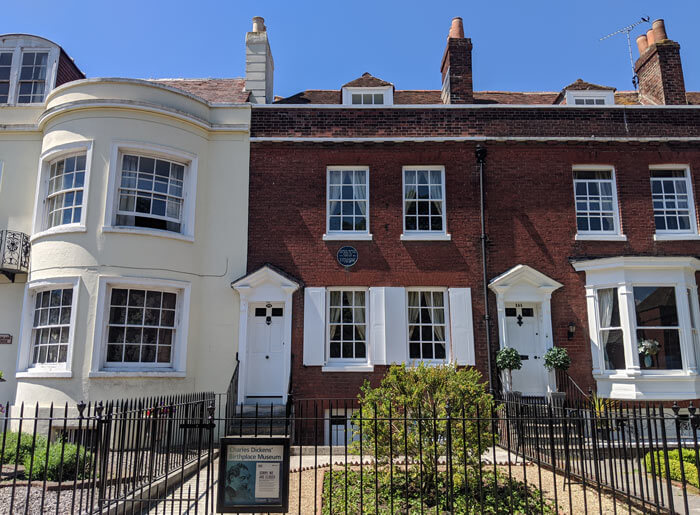
Visit Portsmouth for a day out and you can see where Charles Dickens was actually born in 1812. The house is on a cute little street on the west of the city, near the centre and close to the Dockyard. The Dickens family moved here as Charles’ father, John, had work with the Navy on the Dockyard. He only lived here for three years, as John Dickens’ work called them back to London. Charles did visit regularly though, especially when writing The Life and Adventures of Nicholas Nickleby, which was occasionally set in Portsmouth.
The home has been restored to reflect how a middle-class home would’ve looked in Dickens’ time. There are three furnished rooms, featuring as much memorabilia as possible.
The house also features the couch which he died on in his house in Kent – and his inkwell and paper knife. All the key items and moments of his life are contained in these walks.
The Charles Dickens Birthplace Museum is open on weekends throughout the summer. Visit on the 2nd and 4th Saturday of the month and there’ll be costumed reenactments.
John Keats’ house, London
By Ellie of The Wandering Quinn
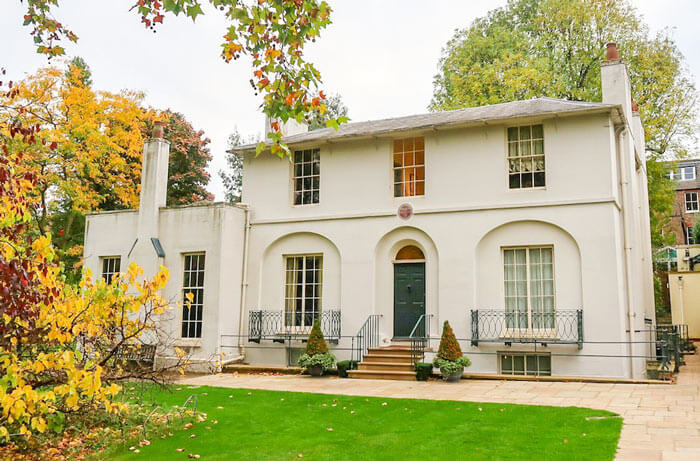
John Keats, the famous Romantic poet, lived in Hampstead, London from 1818 to 1820 before moving to Rome.
Keats House as his former home is now known, is a writer’s house museum and literary centre. It became a museum in 1925 although only just, as in 1920 it was planned to be destroyed and replaced with a row of flats!
Inside you can explore his life and work through many new exhibitions and original manuscripts and artefacts. Keats House also holds many events throughout the year so literary lovers can learn more about him and be inspired in this Hampstead villa the way he was once inspired.
Hampstead is easy to get to on the London Tube. Get off at Hampstead Station or Hampstead Overground Station and then it’s a 10-15 minute walk to Keats House down Keats Grove Street.
Whilst you’re in Hampstead be sure to stick around because it’s a beautiful area of London and there are lots of things to do in Hampstead.
Lamb House, Rye, home to Henry James
By Laura of What’s Hot?
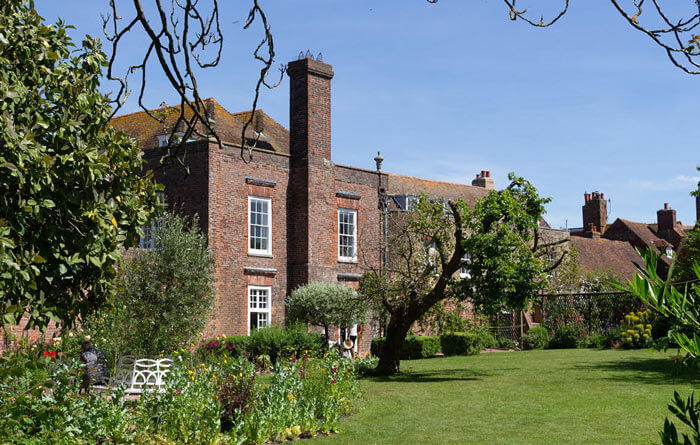
Rye, tiny though it may be, is the perfect little town for book lovers. It’s a quaint town in East Sussex, only an hour or so from London, and famous for its cobbled streets. Although the town only has an entire area of approximately 4km squared, there are three bookshops and a literary National Trust property worth visiting here.
The main attraction, Lamb House, is a beautiful Georgian house that was home to writer Henry James from 1897 to 1914. The author’s house is still decorated in the original 18th-century style and some of James’ possessions are laid out so you can imagine it during the author’s years.
As you wander around, you’ll notice some literary quirks. The name cards at the dining table each belong to a famous author and there’s a watercolour by Beatrix Potter on the walls. The garden to the property was put in at the request of Henry James when he lived here and is the perfect place to sit and relax with a book. If you get peckish, tea and cake are available at the on-site cafe too.
What’s more, Henry James was not the only writer to reside at Lamb House. It was also once home to E F Benson who, incidentally, first visited the property as James’ guest!
Wordsworth’s Dove Cottage in the Lake District
By Anna from My Travel Scrapbook
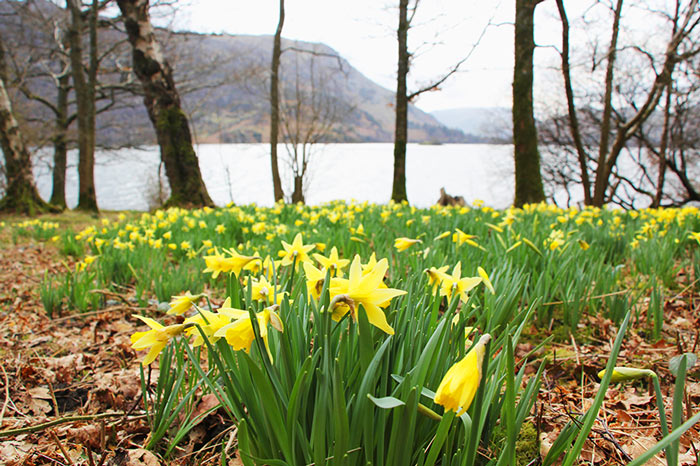
A wonderful writer’s house you can visit in the Lake District is Dove Cottage. Dove Cottage was the home of the poet William Wordsworth and his sister between 1799 and 1808. This author’s house you can visit is in Grasmere in the Lake District national park in England. The poet was inspired by the wonderful surroundings of the national park. Seeing the daffodils in spring by Ullswater inspired him to write “I wandered lonely as a cloud” which is one of the best-known poems of the Romantic movement.
To see where he wrote these wonderful pieces of literature you can visit Dove Cottage. The cottage aimed to provide “plain living, but high thinking”. The cottage was built in the early 17th century and is made of local stone and slate tiles. A guided tour of the cottage gives visitors a glimpse into Wordsworth’s daily life. You are welcome to explore the wonderful garden by yourself. The garden at Dove Cottage is particularly spectacular in late spring and early summer.
Dove Cottage is open to the public from March to November depending on renovation projects. It is open from 9:30 am – 5:30 during this period. Included in the ticket price (£8.25 for adults) is a guided tour of Dove Cottage, entrance to the Wordsworth Museum, access to special exhibitions and family activities during the summer months.
Visit Dove Cottage to see if you will be inspired to write your own poetry! This writer’s house is truly one of the most beautiful spots in the Lake District national park.
Shakespeare’s birthplace, Stratford-upon-Avon
By Jyoti from Story at Every Corner
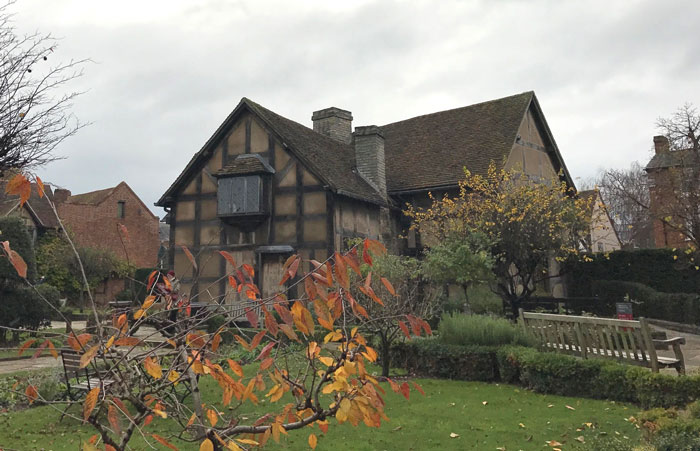
Visitors to London can easily take a day trip to William Shakespeare’s homes in Stratford-upon-Avon. This small town in Warwickshire is where Shakespeare grew up, and is a popular destination for lovers of the Bard.
Shakespeare’s birthplace is beautifully preserved to how it would have been during his childhood and youth. As an infant, he would have slept in a cot in his parents’ bedroom. As a child he would have played with toys similar to those in the house. Later, as an older boy, he would have worked in his father’s leather business.
Visitors to this author’s house can see many artefacts from his life. Shakespeare lived here until he moved on to London’s theatre scene.
Visitors to Shakespeare’s birthplace are bound to wonder which of those aspects of his life influenced his creativity and fuelled his special talents. Was it the house, the lifestyle, his friends, his dad’s thriving business (or his cheats). Whatever it was, the place must have had a part in shaping his genius.
Unfortunately, Shakespeare’s own house doesn’t exist any more. It was demolished by a subsequent owner in 1759 because he got sick of tourists coming to see the house.
Writers’ homes to visit in Europe
These authors’ homes in Europe include some of the biggest names in European literature.
Hans Christian Anderson’s house in Copenhagen, Denmark
By Derek and Mike from Everything Copenhagen
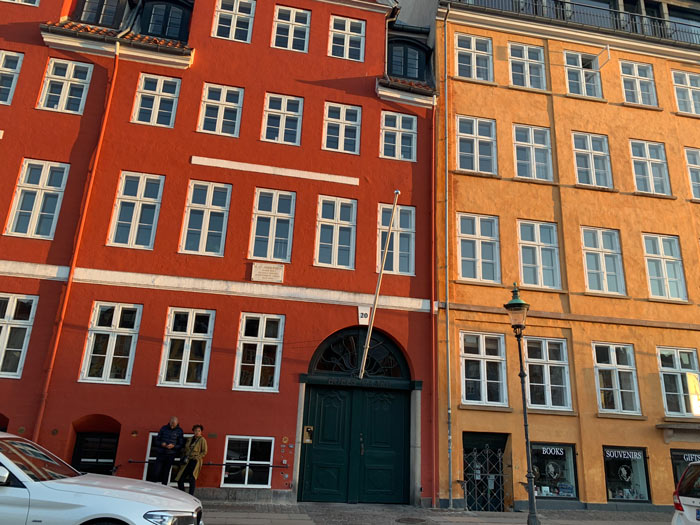
Out of all the writers in the world, one has a special place in the hearts of the Danish people, and that is Hans Christian Andersen. In Copenhagen, he has streets named after him, a ride in Tivoli Gardens that honours his stories and of course the iconic Little Mermaid statue in Copenhagen Harbour.
While his legacy is found all over the city, one of the most unique Copenhagen attractions is the author’s former home. Best of all, it’s found at the iconic harbour of Nyhavn – the pastel canal houses with sailing ships docked along the waterfront that you see in every postcard from Denmark.
To visit the Hans Christian Andersen house, head to Nyhavn and look for a bright red house marked number 20. Hans Christian Andersen lived at the address when he wrote his first published book for stories. Tours of the author’s house are only available on certain occasions, but the lower portion of the adjacent house has been turned into a small museum and shop featuring the author and his writing.
Many days you can observe swans swimming in the harbour in front of the house and wonder if Hans Christian Andersen stepped out to the same view and was inspired to pen the story of The Ugly Duckling.
Anne Frank’s secret annexe, Amsterdam, Netherlands
By Cath from Travel Around Ireland
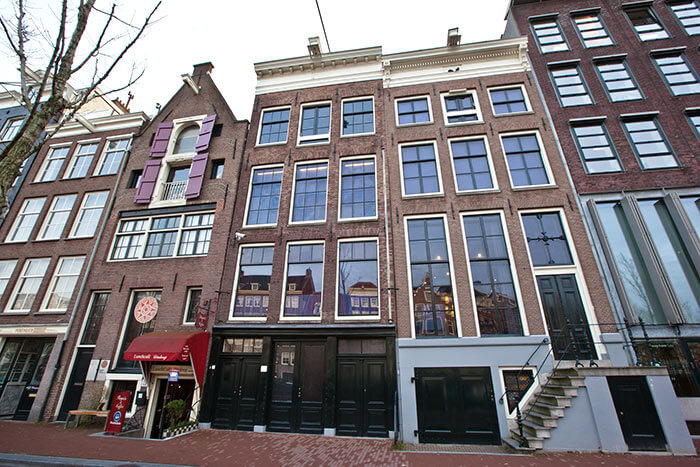
The house in which the famous diary writer Anne Frank and her family hid in during World War II is in Amsterdam and is a must-visit if you are in the city. Located along one of the canals, it is one of the biggest tourist attractions in Amsterdam and it is highly advisable to pre-book your tickets unless you want to stand in long, long queues.
When you visit the house, you pass through the main building which housed Otto Frank’s business, until you come across the entrance to the secret annexe and ascend to the rooms in which the Frank family and their friends hid. They hid here for two years from 1942 until 1944 when they were found and arrested by the German army. Only Otto Frank survived the war. It is a sombre place to visit and the size of the space they had to share is quite shocking.
Having read the diary as a young girl it really affected me visiting the annexe, remembering much of what Anne wrote about during those two years. You can still see some original items that were saved, including Anne’s original diary, and view photos and videos. If you have read the Diary of Anne Frank then the secret annexe is a must-visit.
Victor Hugo’s house in Paris, France
By Elisa from World in Paris
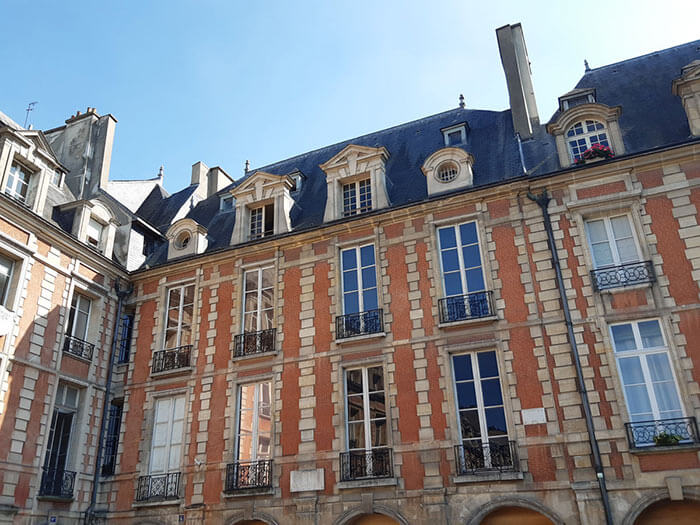
Place des Vosges, in the heart of Le Marais in Paris, was for some years Victor Hugo’s home. The writer, author of famous novels like The Hunchback of Notre-Dame and Les Misérables, rented an apartment in one of the elegant buildings that surround this beautiful square, at 6 Place des Vosges. In this apartment, he lived and worked from 1832 to 1848. Today, this apartment is transformed into a small museum managed by the City of Paris.
Unlike other famous authors’ houses-museums, this apartment does not show the original layout and decoration of the period when it was inhabited by Victor Hugo so it is difficult to get an idea of how was Victor Hugo’s life in that house. However, it has some personal objects related to his life and work that tell visitors bits of his biography so fans of the author and the novel Les Misérables will love it.
One of the most interesting pieces of furniture that visitors can see in the apartment is Victor Hugo’s bed, where he died in 1885. This bed was part of his last house in Paris, not far from the Eiffel Tower, where he spent the last years of his life.
Keats and Shelley Memorial House, Rome, Italy
By Annalisa from Travel Connect Experience
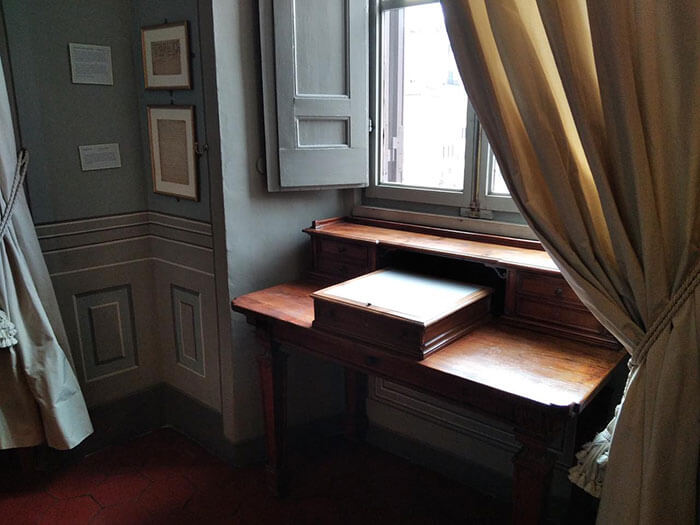
The Keats and Shelley Memorial House is an author’s house museum and library in the heart of Rome’s historical centre. Piazza di Spagna 26 is the address where the English poet John Keats spent the last three months of his life, at the right foot of the Spanish Steps. Keats visited Italy in hope of easing his tuberculosis and rejoicing at the sight of beautiful artistic cities. After a troubled boat trip from London to Naples, he reached Rome in November 1820 and stayed there until the day of his death in February 1821.
Keats’ apartment was acquired and transformed into a memorial house at the beginning of the 20th century under the initiative of a group of American literati in Rome. Keats’ room on the first floor, with his death bed and the desk overlooking Piazza di Spagna are intact. The rest of the house is a fine library that focuses on second-generation Romantic poets especially Keats, Shelley, Byron, and Leigh Hunt. The library includes manuscripts, letters, portraits, and personal objects that are showcased on the walls.
Keats and Shelley Memorial House is open to visitors Monday to Saturday and the ticket costs €6. After your visit, if you’d like to pay homage at Keats’ grave, take a metro ride to the Non-Catholic Cemetery.
Pushkin’s house in Chisinau, Moldova
By Stephanie Craig of History Fangirl
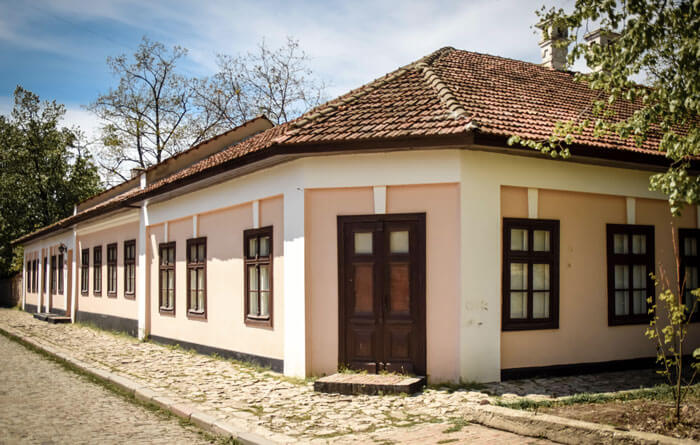
Russian literature lovers might find the tiny nation of Moldova a bit off the beaten path to go to learn about Russian lit, but it’s a must-see for Alexander Pushkin fans. The poet worked on one of his most famous works, Eugene Onegin, while living in Chisinau, as well as completing two of his Romantic poems, the Captive of the Caucasus and The Fountain of Bakhchisaray.
Pushkin was in Chisinau as part of an official exile from Russian society due to his political works. He bounced around the edges of the Russian Empire, including stops in Odessa and the Caucuses.
Though he was only in Chisinau for a short while, from 1821 to 1823, he left an indelible mark on the city.
The building where he lived is part of a larger estate. His room was tiny, and you can envision what it would have been like for him to work at his desk here.
The house has been turned into a museum, but its existence is also an interesting bit of history. When the USSR moved to create the museum in 1948, it was part of a greater move to Russify Moldova (many of whom are ethnically Romanian). Make sure to stop by while in town. It’s one of my favourite things to do in Chisinau!
Dostoevsky’s Apartment, St Petersburg, Russia
By Laura from Laure Wanders
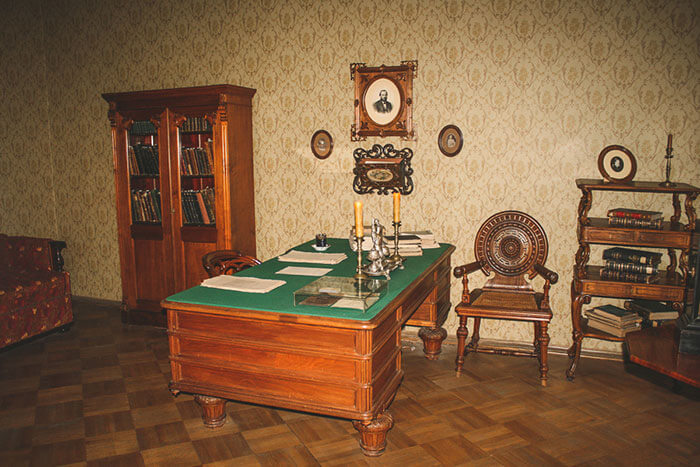
Fyodor Dostoevsky’s apartment is located in Saint Petersburg, Russia, which is the backdrop to many of his famous novels. Although Dostoevsky was from Moscow, he briefly lived in this building during his youth and returned to the place with his wife and their four children in 1878. It’s the apartment where he wrote The Brothers Karamazov (his last novel) and also the place where he died in 1881.
The Dostoevsky Museum consists of two parts, the first one is the six-room apartment where the writer lived with his family. You can visit beautifully reconstructed rooms based on the memories of his wife and friends here. When you enter the author’s study, you’ll notice that the calendar marks the day of his passing. The second part of the museum is an exhibition dedicated to Dostoevsky’s life. It displays biographical pictures, many books and some of his personal belongings. You’ll also find some contemporary art here.
The museum focuses on understanding Dostoevsky’s legendary work and what life was like during the 19th century in Saint Petersburg. The author’s house is an absolute must-visit for literature and history enthusiasts.
Writers’ homes you can visit in the USA
Could the Great American Novel have been written in one of these authors’ homes?
Ernest Hemingway’s House, Key West, Florida
By Theresa of Fueled By Wanderlust
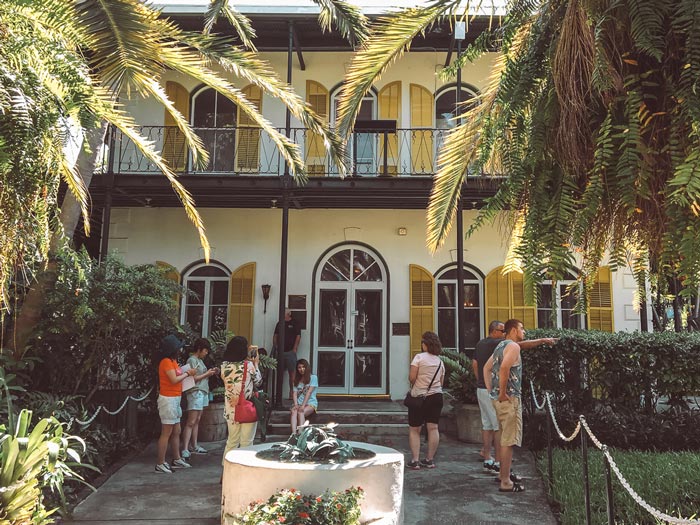
The Ernest Hemingway Home and Museum is located in Key West, just a couple blocks off lively Duval Street. This beautiful house is where Ernest Hemingway resided with his wife, Pauline, and two children from 1931 until 1940. Today, it is a National Historic Landmark that tourists can visit and learn about the life of one of the most famous names in American literature.
While exploring the Hemingway Home, take note of its Spanish colonial exterior, stylish interior, and extravagant $20,000 (more than $340,000 today) pool. Separate from the main author’s house is Hemingway’s writing studio above the carriage house, where he wrote some of his greatest novels.
Outside the house, you’ll no doubt come across one of the forty or so six-toed cats that reside on the property. Some of these are descendants of a cat that was once gifted to Hemingway by a ship’s captain.
You can visit the Ernest Hemingway Home 365 days a year, between the hours of 9 am to 5 pm. The admission fee of $15 includes a thirty-minute guided tour, which takes you throughout the author’s house and provides a colourful history of Hemingway’s life there. A visit to this home is the perfect addition to any Key West itinerary.
Marjorie Kinnan Rawlings’ house in Cross Creek, Florida
By Vicky of Buddy The Traveling Monkey
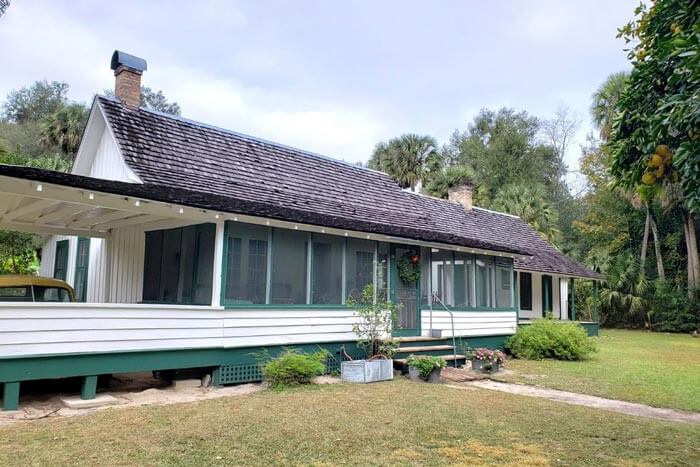
Marjorie Kinnan Rawlings was an American author that wrote many novels and short stories. Her most famous and well-known is The Yearling, which was also made into a movie. She wrote these pieces while living in Cross Creek, Florida. This rural town in Central Florida is between the cities of Ocala and Gainesville.
Marjorie moved to Cross Creek in 1928. The land was wild and her home was simple. Over the years, as her writing earned her more money, she made slight improvements to the house. When she died in 1953, she left the house to the University of Gainesville. The house and surrounding land eventually became Marjorie Kinnan Rawlings Historic State Park.
The park is open year-round and costs $3 per vehicle. Visitors can walk on the grounds, through the orange groves, and along hiking trails. Between the months of October and July, Thursday through Saturday, you can pay an additional $3 per person to enter the house and other structures with a guided tour.
Inside the house, visitors will see exactly how Marjorie lived. All of the furnishings are original and exactly where they were when she lived there. You can even see the table and typewriter she used to write her many novels.
Carl Sandburg’s home, Flat Rock, North Carolina
By Stephanie of Explore More Clean Less
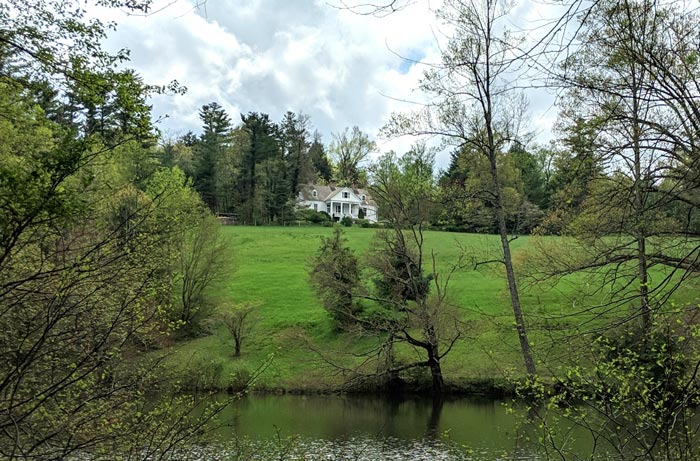
The Carl Sandburg Home National Historic Site is a popular destination in western North Carolina. Known as Connemara, the estate was purchased with the guidance of Lillian Sandburg, Carl Sandburg’s wife, who was looking for more room to house her prize-winning goat herd. While living there for 22 years, Sandburg produced about one-third of his published works and received his second Pulitzer Prize.
The site has over 250 acres of land including hiking trails, a pond, a goat herd, the residence, and lots of outlying buildings.
Visitors can watch short videos about the history of the estate, take a tour of the house, or simply wander the grounds. The goats are open to the public and happy to be petted; during warmer months there are volunteers and staff available to answer questions and help with the babies. There is also an open-air amphitheatre on site, where productions of Sandburg’s work are performed during the summer.
Young kids will love petting the goats and also enjoy working on the free junior ranger program booklet, which you can get in the gift shop inside the main house. It’s easy to spend the better part of the day between the house and the trails, making it a great option for things to do in Asheville.
Frances Parkinson Keyes’ home, New Orleans, Louisiana
By Kimberley from Two Travelling Toques
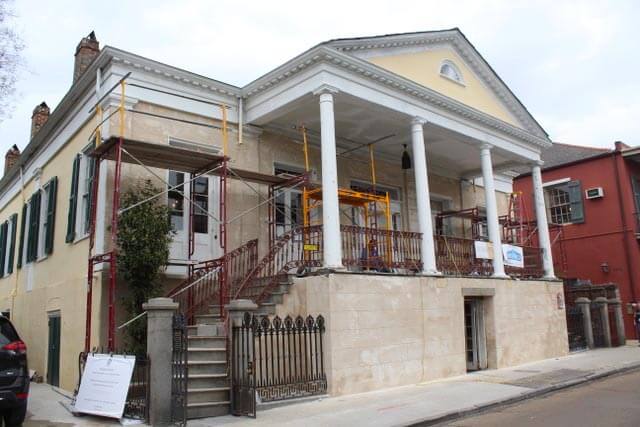
This pale yellow mansion was owned by American author Frances Parkinson Keyes. The house is located in the French Quarter of New Orleans. Frances was the wife of a U.S. senator, and wrote quite a few of her novels about this experience. In the 1950’s she moved to Louisiana and came to reside at what is now called the Beauregard-Keyes House. This stately house was built in 1826, and is now owned by the Keyes Foundation. Frances wanted to make sure the mansion was preserved after she was gone.
While living in New Orleans, Frances began writing about the people of the area. Her biggest-selling novel was a murder mystery called Dinner At Antoine’s. A restaurant that’s still running today.
Since Frances’ death in 1970, the house has become a museum. A tour takes about 45 minutes. You’ll first watch a film about the history of the home. Then a walk-through shows all the paintings that Frances collected over the years, plus many of the original antiques.
Although Frances had this mansion to live in, she preferred to stay and write her novels in a small studio in the courtyard behind the house. You’re able to walk through her studio on your visit and see her manuscripts, doll collection, and rare porcelain teapots.
Jack London’s estate, Sonoma Valley, California
By Sierra of Free to Travel Mama
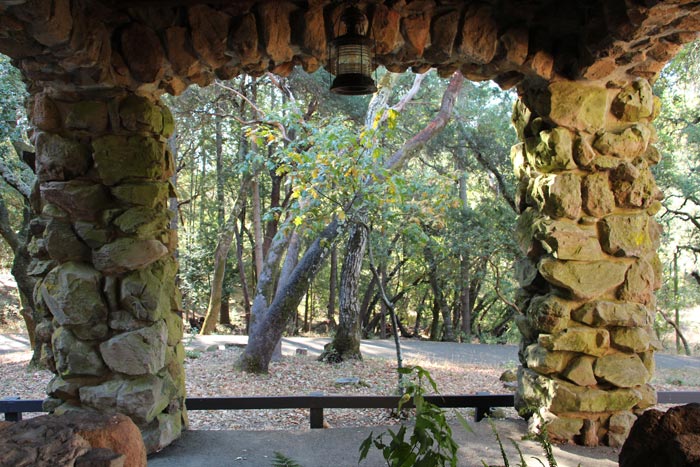
Jack London, author of many works such as White Fang and Call of the Wild, made his home in the beautiful Sonoma valley. Now called Jack London State Historic Park, his home is located in the small town of Glen Ellen, California and is open to the public daily. The beautiful property made up of vineyards, a museum, his ranch, two of his homes, and his burial site. London purchased the property with gorgeous views and rolling hills in 1905 and made the valley his full-time home from 1911-1916.
Several trails are available for hiking, mountain biking and horseback riding on the property. Trails range in length from 1 to 10 miles. The most popular Historic trail is just a one-mile round trip and will lead visitors to the House of Happy Walls Museum (where London’s wife lived after his death), past their Grave Site, to the Wolf House. The latter is a gorgeous stone structure filled with character and stories but sadly sustained considerable fire damage before London ever lived in it.
On the other side of the property is Beauty Ranch where London practised sustainable farming techniques that were modern beyond the times. The Londons’ Cottage is also located here, filled with artefacts and photographs.
Louisa May Alcott’s home, Concord, Massachusetts
By Zack of Florida Man On The Run
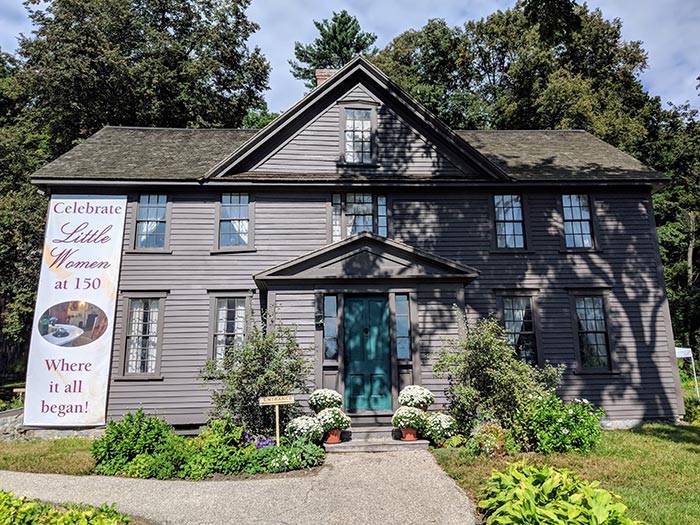
For any fans of Little Women, the Orchard House in Concord, Massachusetts is a must-visit. The Orchard House is the location where Louisa May Alcott wrote her iconic novel and where the family lived from 1857 until 1877. Visitors to the home will be delighted to see that nearly the entire estate remains as it was over a century prior. In fact, many pieces of furniture in the home belonged to the Alcotts and Louisa herself.
The home, which celebrated its 150th anniversary in 2018, is open to guided tours nearly daily. These tours are wonderfully informative. For fans of the book, it’s almost like stepping into the pages where you can imagine yourself in the shoes of Jo. If you’re unfamiliar with the book, then you’ll still greatly appreciate the beautiful home as an extraordinarily well-preserved look into the mid-1800s. The dedication of those on staff to the care of the home is remarkable. They are also extremely kind in sharing their knowledge of an author they loved.
The Orchard House is an easy stop to add on any trip to Lexington or Concord, taking a little over an hour to complete the tour and explore the grounds. It sits just off Lexington Road, two minutes outside of Concord.
Nathaniel Hawthorne’s house, Concord, Massachusetts
By Zack of Florida Man On The Run
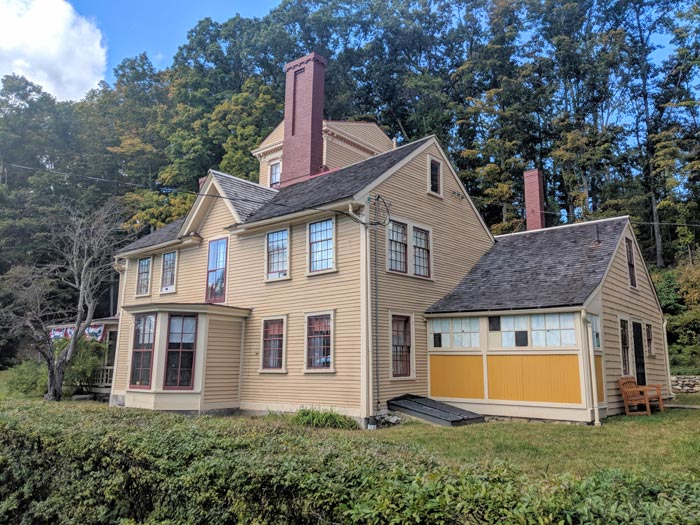
Nathaniel Hawthorne’s home in Concord, Massachusetts, The Wayside, has a deep and rich history. It sits next to another famous literary home, The Orchard House, and in fact The Wayside was once the home of Louisa May Alcott as well! Hawthorne purchased the home from the Alcotts in 1852. While Hawthorne lived overseas during a portion of his ownership, he still made a number of substantial changes to the home.
The Wayside saw the addition of a three-storey tower upon the family’s return from Europe. The top of the tower featured Hawthorne’s “sky parlor” where he did most of his writing at the home. In addition, the home gained a second storey over its west wing and saw the porch enclosed. It is this extra construction that brought the home to its “modern state”. Nathaniel Hawthorne lived in the home until his death in 1864, and the family sold the home in 1870.
The National Park Service purchased The Wayside in 1865, making it the first literary site to be added to the park service. It is operated as a part of the nearby Minute Man National Park and regular guided tours of the home are offered daily. The Wayside is located on Lexington Road, just a stone’s throw from the Orchard House and two minutes from Concord.
William Faulkner’s home in Oxford, Mississippi
By Cindi of the TravelingLater Blog
Just south of the quintessential southern town of Oxford, Mississippi, is Rowan Oak – the home William Faulkner purchased for $6000 in 1930. At the end of a cedar-lined drive, the 1844 Antebellum mansion was Faulkner’s home until he died in 1962.
Most rooms in the two-story are available for touring, and evidence of the author’s daily life is everywhere. The small telephone nook has a black rotary dial telephone and walls covered in handwritten names, numbers, and random words.
Faulkner wrote in the library until he added the study in the early 1950s, after winning the Nobel Prize for Literature. His portable Underwood typewriter is on a small desk in the study, but the walls are the most memorable. All around the room, he pencilled the outline of his Pulitzer Prize and National Book Award-winning novel, A Fable, directly into the plaster.
Free to tour, the gardens and outbuildings on Rowan Oaks’ 29 acres (Bailey Woods) include converted servants’ quarters, a Concentric Circle garden, and an English Knot garden centring on a “knot” of Wisteria.
Authors’ houses in other parts of the world
Pablo Neruda’s house in Valparaiso, Chile
By Dave Chant of www.davechant.com
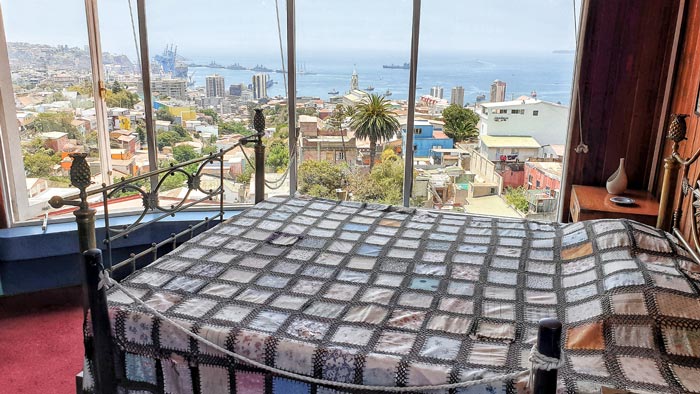
Ricardo Eliecer Neftali Reyes Basoalto is better known by his pen name Pablo Neruda. He was a Chilean poet and politician, and won the Nobel Prize for Literature in 1971. He’s a deeply interesting character from his admiration of Stalin to his exile and his suspicious death, listed as a heart attack but potentially killed by the Pinochet regime.
Neruda owned three houses in Chile and all are open to the public – La Chascona in Santiago, La Sebastiana in Valparaiso, and his home on Isla Negra.
My favourite is the La Sebastiana, set on one of the 42 hills overlooking the “graffiti” town of Valparaiso. In the 50s Neruda got tired of Santiago and found his home here in Valparaiso, a 2-hour drive from the capital to the coast. He acquired it in 1959.
The draw here is the five floors with unparallel views over the Pacific Ocean – a chance to get inside the head of one of the great poets of the 20th century.
It was the sanctuary he wanted “that seems like it floats in the air, yet that is well grounded on earth.”
Andrea Hirata’s home in Belitung, Indonesia
By Marya from The BeauTraveler
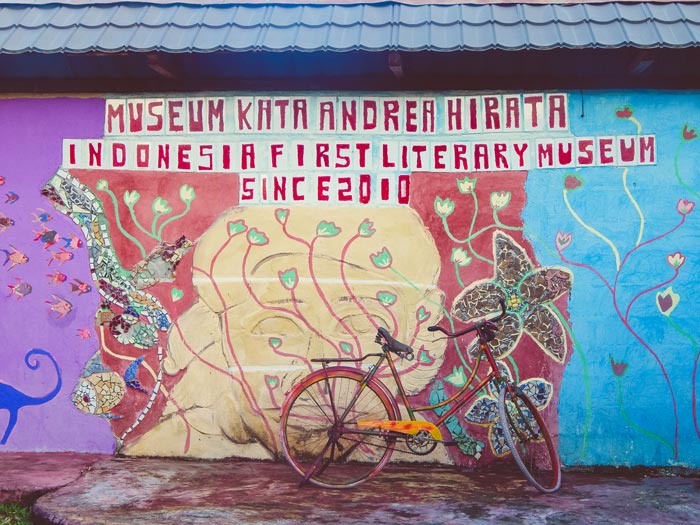
Laskar Pelangi (The Rainbow Troops), a best-seller novel written by Andrea Hirata, is his childhood memoir about the story of growing up on Belitung Island, Indonesia. Ever since it got adapted into a movie in 2008, the small island has seen an increase in visitors of up to 2000%, thanks to the movie showcasing the beauty of the island.
Apart from the beautiful white sand beaches, the author’s childhood home has also been transformed into a literary museum as well as a free school for the less fortunate communities on the island.
A replica of his school, in which most of the story in the novel took place, is also located not so far from the house. The latter became an important part of the story since he shared the irony of lacking access to good education in one of the world’s richest islands.
The writer’s house became the first literary museum not only on Belitung island but also in Indonesia. The entry ticket for the author’s home and the museum includes a free copy of one of his books.
RK Narayan’s house in Mysore, India
By Reshma of The Solo Globetrotter
R K Narayan is one of the most-renowned Indian authors of early Indian literature in English. Over the 60 years of his writing career, he produced some of the most beautiful works in English, with his focus on ordinary people’s lives, politics and social commentary, written with satire and humour. His house, located in Mysore, is one of the most worthwhile places in India to visit.
The house was converted into a museum in 2016. It was constructed in 1952, and RK Narayan lived here for the rest of his life. The architecture of the building is modelled after William Shakespeare’s home in England. The collections you’ll see inside the author’s home depict the life of the writer, which includes his personal belongings, rare photographs, antique furniture, hand-written scripts, letters and conversations and the awards he won.
You can combine a visit to RK Narayan’s home with many other places in Mysore, the most notable being the magnificent Royal Palace.
A note on diversity and Black authors’ houses
I started putting this blog post together just before the Black Lives Matter protests. I’ve been listening and learning, and I felt it was wrong that no Black authors’ homes appeared in the list. So I did some research.
Many of the authors’ houses above have something in common. The writers were white, lived in the 19th century and were at least comfortably off, if not wealthy. Where they didn’t have money, they at least had social standing. And when they died, there was either enough money to keep the house in the family, or a historical or literary society (presumably made up of similarly comfortably-off donors) could adopt the house and save it for posterity.
There are comparatively few Black authors’ houses that are open to the public. Maya Angelou’s homes in North Carolina and New York were sold after her death in 2014. Toni Morrison’s house isn’t open for visits. James Baldwin’s house in the south of France was left to crumble and was finally almost completely demolished in 2014 to make way for a luxury apartment block.
Some Black writers’ houses have been preserved. Zora Neale Hurston’s modest house in Fort Pierce, Florida has been designated a National Historic Landmark and was recently saved from redevelopment. A community group plans to turn it into a museum honouring the writer.
Langston Hughes’s apartment on the top floor of a Harlem brownstone in New York City reopened to the public in 2023 and is a museum and community arts space.
Alex Haley’s home in Henning, Tennessee has been returned to be as it was when the author of Roots was born there in 1921. A museum which aims to promote the understanding of Black history and genealogy has been added at the back of the author’s house.
Frederick Douglass’s Cedar Hill estate in Washington is now a National Historic Site. The house has been restored to its 1895 appearance and is open for guided tours.
And finally, while he wasn’t a novelist, poet or playwright like the other authors in the post, Martin Luther King Jr’s birth home in Atlanta, Georgia is open for guided tours. Several other buildings in the immediate area associated with Dr. King’s life are also open to the public.
If you know about other Black authors’ houses that are open to the public, please let me know in the comments.
Did you enjoy this post about writers’ houses? Pin it for later!
